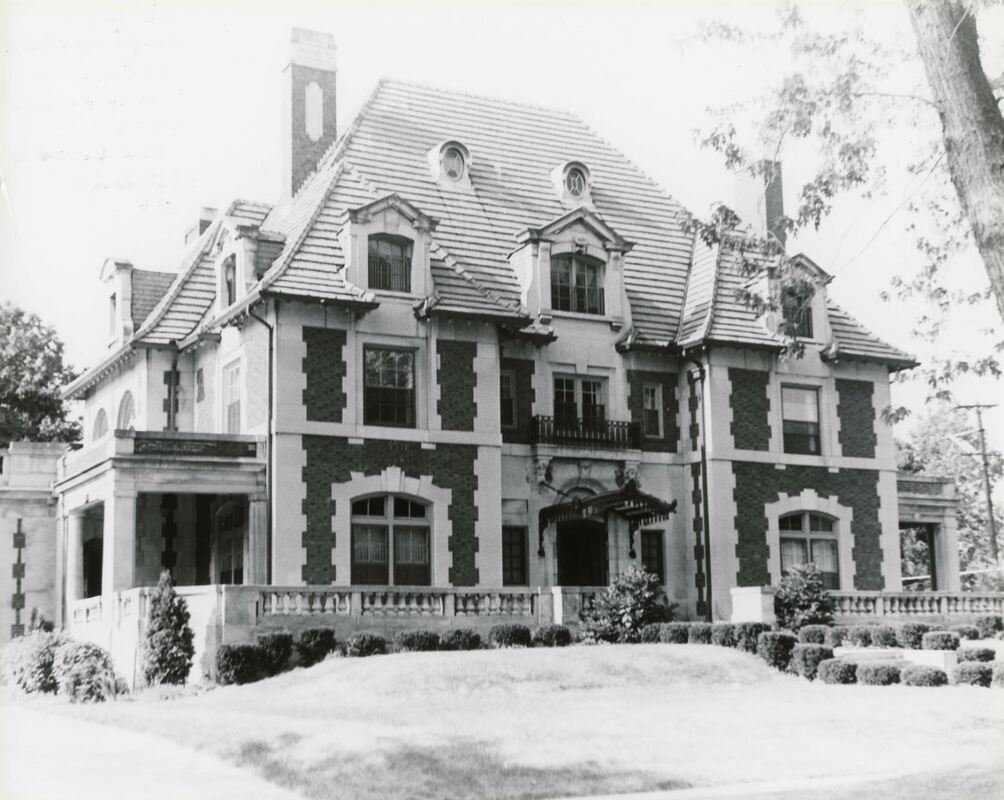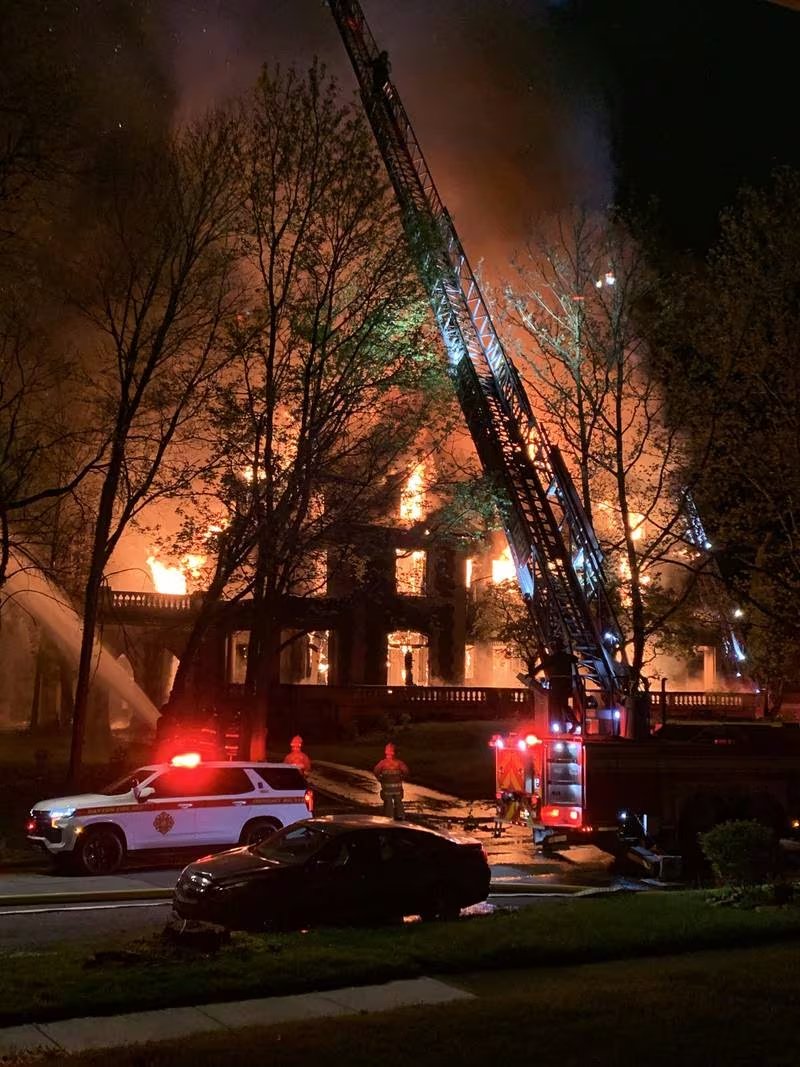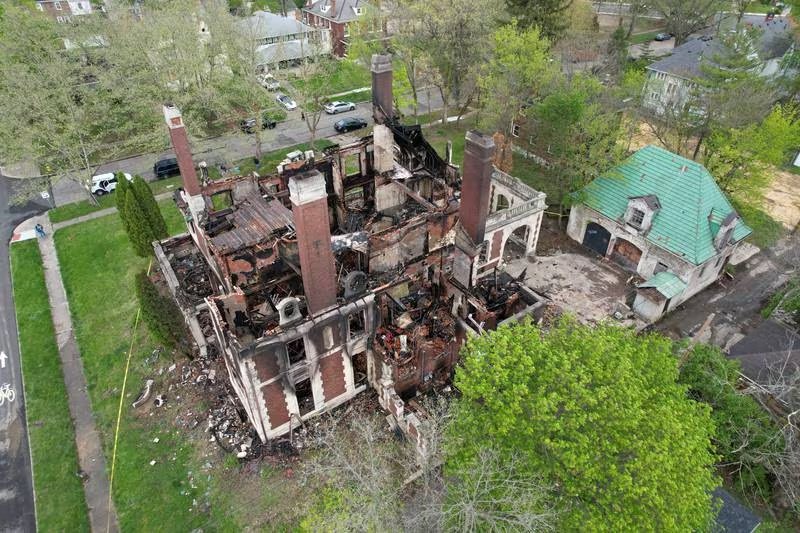Architectural styles have the power to transport us to different eras, evoking a sense of history and grandeur. One such style that seamlessly blends opulence and elegance is the Châteauesque architectural style. Originating in France during the 19th century, this style has found its way across the Atlantic, leaving an indelible mark on American landscapes. In this blog post, we'll explore the features of Châteauesque architecture and highlight some notable examples, including the lost Traxler Mansion in Dayton, Ohio.
Features of Châteauesque Architecture:
1. Inspiration from French Châteaus:
At its core, Châteauesque architecture draws inspiration from the grand French châteaus of the Renaissance and medieval periods. These majestic structures, often surrounded by lush landscapes, served as the muse for architects looking to recreate a sense of aristocratic luxury.
2. Steeply Pitched Roofs and Turrets:
One of the defining features of Châteauesque buildings is their steeply pitched roofs with intricate detailing. Turrets, reminiscent of medieval towers, often grace the corners of these structures, adding a fairytale-like quality to the design.
3. Masonry Construction:
Châteauesque buildings typically showcase robust masonry construction, featuring a harmonious blend of stone and brick. This choice of materials not only enhances the aesthetic appeal but also contributes to the longevity of these architectural wonders.
4. Balconies and Terraces:
Expansive balconies and terraces are common elements in Châteauesque architecture. These outdoor spaces provide inhabitants with panoramic views of their surroundings while adding a touch of refinement to the overall design.
5. Dormer Windows and Pointed Arches:
Dormer windows punctuate the steep rooflines, bringing natural light into the upper levels. Pointed arches, a nod to Gothic architecture, are frequently incorporated into doorways and windows, adding a sense of verticality and grace.
Examples of Châteauesque Architecture in the United States:
Biltmore: George Vanderbilt's 250-room castle is America's Largest Home and a top attraction in Asheville, NC.
1. Biltmore Estate - Asheville, North Carolina:
Arguably the most famous example of Châteauesque architecture in the U.S., the Biltmore Estate is a sprawling mansion built by George Washington Vanderbilt II. Completed in 1895, this magnificent residence boasts all the hallmarks of the style, from its turrets to its meticulously landscaped grounds.
2. Hearst Castle - San Simeon, California:
Commissioned by newspaper magnate William Randolph Hearst and designed by architect Julia Morgan, Hearst Castle is a prime example of Châteauesque opulence. Perched on a hill overlooking the Pacific Ocean, the estate features a blend of Mediterranean and Châteauesque elements.
3. Oheka Castle - Huntington, New York:
Built in the early 20th century, Oheka Castle is the second-largest private residence in the United States. Its Châteauesque design includes a grand courtyard, impressive towers, and expansive gardens, all contributing to its regal charm.
The Lost Traxler Mansion in Dayton, Ohio:
Among the notable examples of Châteauesque architecture in the United States, the Traxler Mansion in Dayton, Ohio, held a special place in the Midwest. Unfortunately, this masterpiece is no longer standing, leaving only historical records and photographs to capture its former glory after a fire swept through the mansion. Built in the early 20th century, the Traxler Mansion showcased the elegance and grandeur of Châteauesque style, contributing to the architectural tapestry of Dayton.
Châteauesque architecture continues to captivate enthusiasts and architectural historians alike with its blend of medieval charm and Renaissance splendor. As we explore these grand structures, we're reminded of an era where architects sought to bring a touch of European nobility to the American landscape. Though the Traxler Mansion may be lost to time, the enduring legacy of Châteauesque architecture lives on in the majestic structures that dot the United States, inviting us to step into a world of timeless elegance.





